- News
- Reviews
- Bikes
- Accessories
- Accessories - misc
- Computer mounts
- Bags
- Bar ends
- Bike bags & cases
- Bottle cages
- Bottles
- Cameras
- Car racks
- Child seats
- Computers
- Glasses
- GPS units
- Helmets
- Lights - front
- Lights - rear
- Lights - sets
- Locks
- Mirrors
- Mudguards
- Racks
- Pumps & CO2 inflators
- Puncture kits
- Reflectives
- Smart watches
- Stands and racks
- Trailers
- Clothing
- Components
- Bar tape & grips
- Bottom brackets
- Brake & gear cables
- Brake & STI levers
- Brake pads & spares
- Brakes
- Cassettes & freewheels
- Chains
- Chainsets & chainrings
- Derailleurs - front
- Derailleurs - rear
- Forks
- Gear levers & shifters
- Groupsets
- Handlebars & extensions
- Headsets
- Hubs
- Inner tubes
- Pedals
- Quick releases & skewers
- Saddles
- Seatposts
- Stems
- Wheels
- Tyres
- Health, fitness and nutrition
- Tools and workshop
- Miscellaneous
- Tubeless valves
- Buyers Guides
- Features
- Forum
- Recommends
- Podcast
news
“I wear bright colours, lights, and reflective bags – but drivers still close pass me every day”: Cyclists respond to hi-vis calls by claiming drivers “choose not to see” them, but others ask “What’s the problem with close passes?” + more on the live blog
SUMMARY
No Live Blog item found.
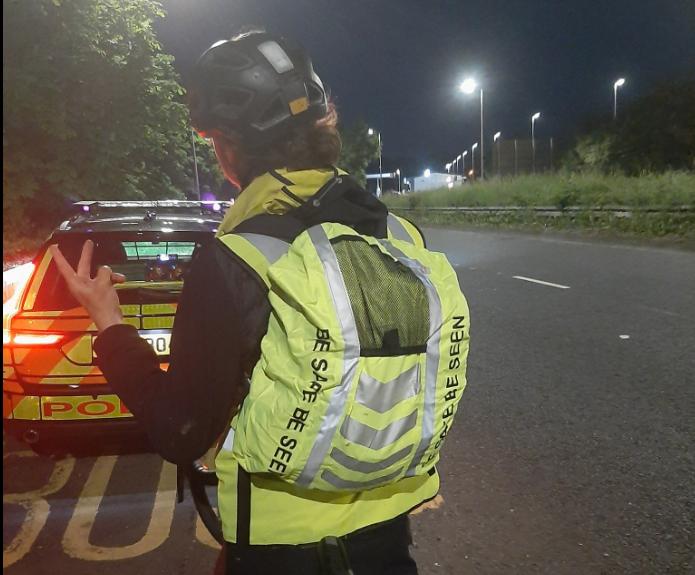 Police stop cyclist at night during long-distance ride to give him hi-vis vest and bag (Northern Ireland Road Policing and Safety unit)
Police stop cyclist at night during long-distance ride to give him hi-vis vest and bag (Northern Ireland Road Policing and Safety unit)05 November 2024, 09:10
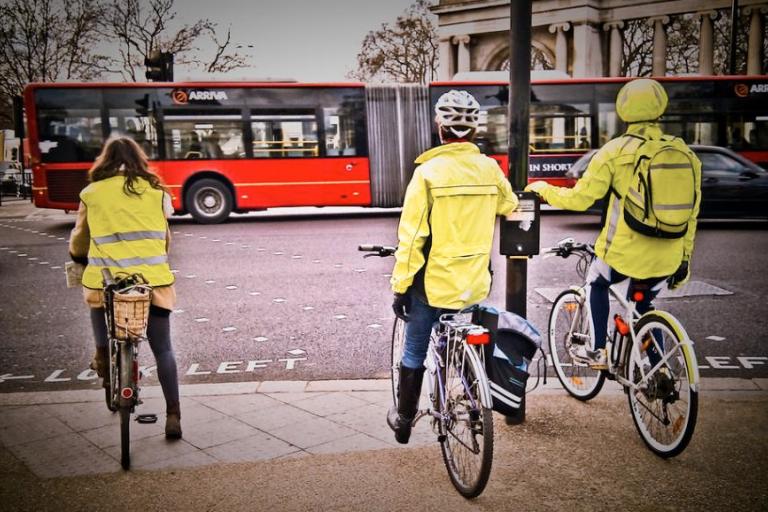
“I wear bright colours, lights, and reflective bags – but drivers still close pass me every day”: Cyclists respond to “nonsense” hi-vis calls, claiming “none of it makes a difference” and drivers “choose not to see” them
Yes, it’s that time of the year again, folks.
‘Tis the season for hi-vis and lights cycling safety debates, when usually well-meaning police forces, local authorities, and road safety organisations deliver one-sided messages, videos, and social media posts calling on cyclists to ‘be safe, be seen’.
To be honest, it’s the only time I’ll allow a debate about being surrounded by lights to take place in November (and yes, I am talking about you early Christmas tree enthusiasts – get a life).
Anyway, before I go all Grinch on the live blog, just last week we reported that Northumberland County Council issued a social media warning telling “all cyclists and pedestrians” that “during the autumn and winter months motorists take longer to notice you. Take extra care near or when crossing roads or try to wear something bright or reflective to help motorists see you.”
While that particular post sent one local councillor scurrying off to the anti-cycling bingo hall to rant about “Lycra louts”, others suggested that asking motorists to take extra care and look out for vulnerable road users may be a more effective approach to keep the roads safe during winter.
And yesterday, we heard from Worcester resident Roy Clarke, who used his local paper’s letters page to urge cyclists to make sure their lights are working, otherwise drivers just can’t see them.
In a response to Clarke’s hi-vis call, Bike Worcester’s chair Dan Brothwell penned his own letter, jokingly asking “now the clocks are changing and as we go into darker days and nights, that drivers of all abilities check the headlights are working on their vehicles. It is difficult for drivers to see cyclists in the dark if their headlights are faulty.”
“Joking aside, this is an important issue,” he continued. “I agree with Roy that everyone cycling at night should have working front and rear lights in accordance with the Highway Code and the same applies to drivers.
“I’d also recommend everyone takes time to refresh their Highway Code knowledge and drive to test standard.
“When cycling my lights are on continuously (dynamo), bags have reflective panels, and I’m usually wearing bright colours. I’m still close passed by, on average, five per cent of drivers on my commute to work and witness illegal driving and parking whenever I’m travelling, notably speeding and phone use.”
Since appearing on yesterday’s live blog, Brothwell’s comments have sparked quite the debate on social media.
“Five per cent is better than 100 per cent in that case,” said Ady Suter on Twitter, in response to the cycling campaigner’s claimed rate of close passes per day.
“The hi-vis and lights help the more considerate drivers (that’s 95 per cent of them!) to see you in plenty of time and to prepare a safe pass. Better for everyone.”
However, not everyone was convinced of the powers of hi-vis.
“I get more close calls on the days I wear hi-vis sometimes,” said Les Jackson on Facebook.
Cycling campaigner Ruth Mayorcas added: “In broad daylight in high summer drivers still close pass.”
> Mandatory hi-vis for cyclists a “timely proposal” coming up to Christmas, say councillors
Others, meanwhile, were quick to criticise the often one-sided nature of these winter road safety calls.
“Can we have an annual call for drivers to not speed?” asked Joe Gardias.
“It’s amazing that drivers see cyclists running red lights. Any other time not so much,” added Dean Lewis.
Niall McFarland concurred: “The only cyclists that drivers manage to see are those with no lights, those on footpaths and those riding four abreast. They fail to see any others.”
“Hi-vis makes very little difference, knocked off several times, with bright lights and hi-vis jackets, and always told ‘sorry I didn’t see you’, because they’re not looking and shouldn’t be allowed on the road,” said Mark Kingsland.
“Hi-vis and lots of flashing lights don’t stop people driving into highway maintenance and emergency vehicles,” wrote Gareth Roberts.
“I’ll just stick to a light and wearing what I feel is appropriate for the time of day/year and weather.”
> Good Morning Britain asks should cyclists have to wear a "hi-vis uniform" to ride a bike?
“It’s ultimately nonsense,” Michael Brown said of the yearly call for hi-vis. “Drivers choose ‘not to see’ most cyclists because they aren’t paying attention.
“Using a decent bike light is more than enough – and I’ve experimented over the years with hyper-fluorescent jackets, normal hi-vis tops and other have deliberately tried wearing dark clothes whilst still having a good bike light. My own experience is none of it makes a difference.”
“Yep, it’s never been about what a cyclist is wearing,” echoed Sam. “Some drivers see you and don’t care.”
According to Nick Edwards, that can sometimes also apply to other cyclists, too.
“I was actually hit by another cyclist tonight, he was riding down and me up, I was wearing hi-vis, bar mounted light, helmet light and he still didn’t see me until he hit me head on,” he said.
Meanwhile, Gav Marten argued that some bike lights can do more harm than good.
“I’ve still got spots in my vision from an inconsiderate cyclist and his night-sun light,” he wrote.
“Car headlights are designed with a beam spread and height cut (not perfect) but cheap Chinese bike lights are friggin’ blinding as they hit the eyeball direct with thousands of lumens!”
Of course, Richard Littlejohn came along to provide some, ahem, ‘balance’ to proceedings.
“Maybe if cyclists were more predictable with their movements, everyone would be a lot safer,” he said. “I see so many cyclists weaving out of traffic, entering on the road from the pavement without looking.
To be fair and honest, it's not normally the ones with the proper kit, they’re normally following the rules of the road, it’s the rest. Almost hit one the other day that was on the pavement and then randomly decided to join the road!”
He could get a job at Northumberland County Council’s social media department with that stance…
05 November 2024, 10:17

“What is really the problem with a close pass? What other option is there for motorists?”
While everyone was else was busy discussing hi-vis, lights, and victim-blaming safety posts in the comments, one Facebook user – who purports to have cycled “around the world every day” for 18 years (blimey, that’s some mileage) – instead chose to question Bike Worcester chair Dan Brothwell’s point about close passes and, in doing so, raised an existential question for our Near Miss of the Day series.
“While I understand that it can be a little scary, what is really the problem with a close pass?” asked Mark Hartley on Facebook.
“I've been cycling around the world every day for 18 years in 36 countries and I’ve never had a problem with trucks, cars, and buses passing close to me. So long as they don’t hit me, obviously. Which nobody ever has.
“I mean, most roads are small and there’s no other way to pass. What other option is there for motorists?
“I’ve never been hit nor ever had reason to believe I would be hit and so it’s never bothered me. Are lots of people being hit because of close passes? Have I just been very lucky? Is it just a UK problem?”
Errr, I’m not really sure where to start with all that.
Well, I suppose we should start with those in agreement.
“Close pass? What is a close pass?” wrote Shane Crowe (who may or may not be Russell’s brother).
“I ride to work and never have an issue with vehicles passing me, I ride about 1.5ft away from the kerb and ride steady, no wobbling or forcing cars to change lanes to overtake me, what’s the issue here!!!”
“It’s newbie cyclists trying to get popular on social media with close pass videos,” argued Bruce Swain (not Batman’s alter ego, either). “I agree it's not an issue, or certainly is not a big an issue as these people make out.
“This ‘campaign’ is further eroding the relationship between road users, and making the roads less safe, all in the hope to make some $$$ from social media.”
And now for the opposition…
“While I understand that it can be a little scary, what is really the problem with people speeding at 100mph through residential areas?” asked Si Lowe.
“A close pass is always just a close pass until it isn’t,” noted Simon Boswell. “I’ve been knocked off by a driver who tried to squeeze between me and the car coming the other way and misjudged it. A broken wrist and four cracked ribs isn’t funny.”
“It’s unnecessary, plain and simple,” added Tom.
“Surprised that you think a vehicle coming close enough to touch is not a problem,” replied Will.
“Are you the one they shout at on the station for not standing behind the yellow line as well?
“When the same regular drivers go by you doing 50mph, close enough for you to feel the wing mirror difference, knowing that you have been hit by wing mirrors before, all for the sake of a touch of steering away.
“What makes their importance worth the risk to my life?”
05 November 2024, 11:55
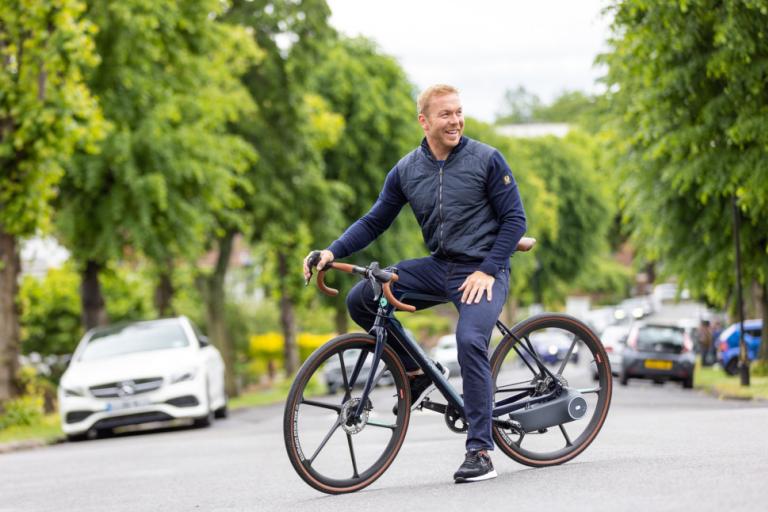
Sir Chris Hoy opens up about “toughest year of our lives” in first TV interview since terminal cancer diagnosis, as Health Secretary says government is “actively looking at” lowering prostate cancer screening age
Health Secretary Wes Streeting has announced that the government is “actively looking at” lowering the screening age for prostate cancer, as Sir Chris Hoy took part in his first television interview since revealing that his cancer diagnosis is terminal two weeks ago.
Speaking to BBC Breakfast’s Sally Nugent, six-time Olympic gold medallist Hoy – whose announcement coincided with a sevenfold increase in prostate cancer advice searches on the NHS’s website – detailed the “living nightmare” that followed his diagnosis last year, the “overwhelming” support he’s received, and how he’s “grateful for each day”.
“It’s been the toughest year of our lives so far by some stretch,” the 11-time world champion track sprinter said on the programme, adding that the news in September 2023 that he had terminal cancer came “completely out the blue”.
“No symptoms, no warnings, nothing. All I had was a pain in my shoulder and a little bit of pain in my ribs. But this ache and pain didn’t go away.
“I assumed it was going to be tendonitis or something, and it was just going to be ‘lay off weights or lay off cycling for a wee while’, and get some treatment and it’ll be fine.”
A scan revealed a tumour, before Hoy was later told that the prostate cancer had spread to his bones.
“It was the biggest shock of my life. I remember the feeling of just absolute horror and shock. I’d had zero symptoms, nothing to point me towards that that might be an issue. We were given the news that this was incurable.
“Suddenly, everything, all your thoughts, everything rushes. It’s almost like your life is flashing before your eyes in that moment.
"How on earth are we going to tell the kids? It’s just this absolute horror, it is a waking nightmare, living nightmare.
“We just tried to be positive and tried to say do you know what, this is what we’re doing and you can help because when I’m not feeling well, you can come and give me cuddles, you can be supportive, you can be happy, you can be kind to each other.
“I’m sure lots of families do it in different ways and I think there’s no one right approach for anyone. There’s no one-size-fits-all, but for us I think that was the best way to do it.”
> Sir Chris Hoy “optimistic, positive, and surrounded by love” after revealing cancer diagnosis
Hoy also told Nugent that chemotherapy was “one of the biggest challenges I’ve ever faced” and that his wife Sarra’s multiple sclerosis diagnosis in November 2023, news she initially shared only with her sister, was the “lowest point”.
“I don’t think we necessarily give ourselves enough credit for what we’re able to deal with,” the 48-year-old said. “It’s only when you're in really difficult situations you find out what you’re made of and what you can deal with.
“And it puts it into perspective riding bikes for a living, you realise, ‘God, that was just a bit of fun really’, you know.”
As has been the case since he revealed the news two weeks ago, Hoy’s positivity has been a constant when discussing his diagnosis.
“The stakes are much higher now. It felt like life and death in the moment when you were battling it out for an Olympic gold medal, but the stakes have changed dramatically and it is life and death,” he says.
“But the principle is the same, it’s about focusing on what you have control over and not worrying about the stuff that you can’t control.
“You don't just suddenly have a leap forward and one day you wake up and everything’s OK. It takes time and you’ve got to be disciplined with how you approach it, and you’ve got to nip things in the bud before these negative thoughts start to take hold.”
He also hopes his status as an Olympic hero will encourage more men to take a prostate-specific antigen (PSA) blood test to check for cancer – and potentially save more lives.
Calling for screening for men with a strong family history of prostate cancer to start at an earlier age, Hoy said: “If you’ve got family history of it like I have, if you’re over the age of 45, go and ask your doctor. I’ve got a friend who, when I told him my news early on confidentially, he went and got a PSA test and it turned out he had cancer. He’s had treatment and he’s been given the all-clear.
“Maybe people seeing this or hearing about my story, just by them asking their GP, will create enough of a surge of interest that people that make the decisions will go ‘you know what, we need to address this’. And in the long term this will save potentially millions of lives.”
Labour Health Secretary Wes Streeting also told BBC Breakfast that the government is looking into acting on his calls for lower screening ages, and that the Olympic champion is “already making a difference”.
“There will be lots of people out there living with cancer at the moment, either themselves or someone they love,” Streeting said. “The way he has spoken so openly and full of optimism about his own journey with cancer I think will have given hope and inspiration to millions of people across the country.”
Hoy, meanwhile, is busy organising his planned charity sportive for people with stage four cancer, the first edition of which will take place next year, while his memoir based on the past year, ‘All That Matters: My Toughest Race Yet’, is released this week.
The full interview with Nugent will also be broadcast tonight on BBC One at 8pm.
"My perspective on life has changed massively,” he says. “I am more thankful, I'm more grateful for each day. It’s been a tough year and it's going to be tough ahead in the future too but for now, right here right now, we’re doing pretty well.”
05 November 2024, 16:56
Now that’s how you end your cycling career: Rigoberto Urán closes out 18-year pro career in style with massive farewell event in Medellín
They don’t call him the cycling rock star for nothing:
05 November 2024, 16:26
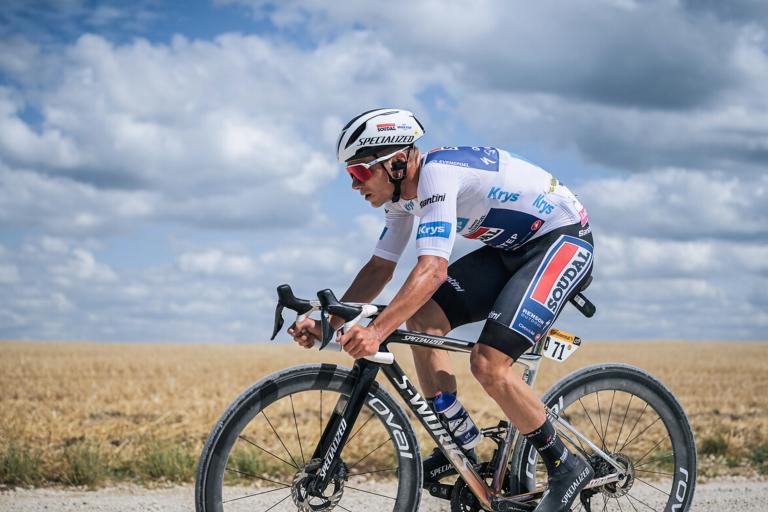
Red Bull-Bora-Hansgrohe offered Remco Evenepoel €10 million a year, Belgian media claims – but Soudal Quick-Step boss Patrick Lefevere put up “obstacles” to stop move
Speaking of Remco Evenepoel, and his rival Tadej Pogačar’s groundbreaking new deal at UAE Team Emirates, the Belgian media has claimed this week that Evenepoel was offered a whopping €10 million a year by Red Bull-Bora-Hansgrohe, as the German team worked hard to prise the double Olympic champion away from Soudal Quick-Step during a protracted transfer saga this year.
According to Het Laatste Nieuws, Red Bull had a mega contract “ready to go” for Evenepoel, which along with the massive salary increase would also have included three support personnel making the move from Soudal Quick-Step alongside the Belgian, including management figure Klaas Lodewyck.
Other reports, however, have suggested that €10 million figure was to be spread out over two years, which makes sense considering Pogačar’s €8m a year contract.
(ASO/Billy Ceusters)
In any case, Het Laatste Nieuws say the move was blocked by Soudal Quick-Step boss Patrick Lefevere’s desire to put “obstacles” in the way, by preventing the three staff members from leaving.
In an ultimately successful bid to keep his star rider, fresh from his first Tour de France podium place, Lefevere also “glued Evenepoel on for the duration of his contract” by raiding the team’s coffers to increase the former Vuelta winner’s basic salary to €5 million a year until the end of his deal in 2026, possibly making the Belgian the second-best paid rider in the world behind world champion Pogačar.
That’s why he can afford all these November holidays, then. And who says cycling is turning into football?
05 November 2024, 15:59
Pro cyclists on their holidays
Look at Remco here, enjoying himself on holiday in November while the rest of us have to work when it’s damp, cold, and miserable at home:
Me, bitter? Never…
05 November 2024, 15:28
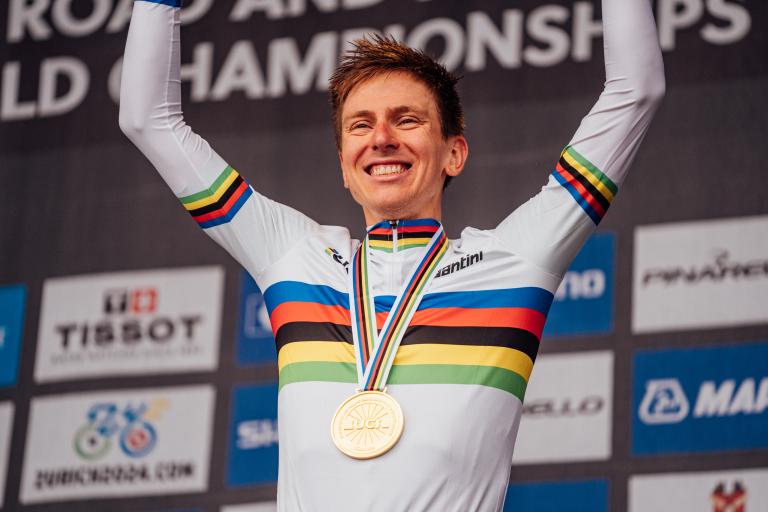
Details of Tadej Pogačar’s bumper new contract at UAE Team Emirates revealed, with world champion on €8 million a year with €200M buyout clause
At the 1984 Tour de France, on top of Alpe d’Huez and with the help of a female motorcycle rider, Greg LeMond agreed a deal with the mercurial Bernard Tapie to join his La Vie Claire team and become the first ‘million-dollar cyclist’.
Of course, even for a rider as talented and sought after as LeMond, that moniker was typical Tapie public bluff and bluster – the American’s three-year deal at Le Vie Claire was instead closer to the $800,000 mark all told.
That contract, despite not quite reaching the million, did single-handedly transform the market value of pro cyclists, something LeMond would achieve again in 1989 when he signed a three-year contract with Z worth $5.5m.
Fast forward 40 years, and Tadej Pogačar is the one reaping the long-term benefits of the deal struck by Tapie and LeMond in their clandestine evening meeting at the 1984 Tour.
(Zac Williams/SWpix.com)
According to La Gazzetta dello Sport, the six-year contract extension signed by the Triple Crown winner last month with his UAE Team Emirates squad – unleashing accusations of sportswashing complicity against the world champion – means Pogačar will be paid €8 million a season until 2030.
That €48m deal means the Slovenian is comfortably the best paid rider in the world, with Gazzetta reporting earlier this year that Tour rival Jonas Vingegaard earns € 4m a year at Visma-Lease a Bike (and that €8m annual wage is before we factor in image rights and win bonuses, of course, which could Pogi’s earnings into truly stratospheric territory).
Interestingly, in another football-style development, Pogačar has reportedly agreed to a clause in his contract which means that he or any interested team will have to pay a buyout of €200m if the three-time Tour de France winner wishes to leave UAE before 2030. Which means, realistically, that he’s not going anywhere.
It certainly pays to turn a blind eye to sportswashing, eh?
05 November 2024, 14:59
Mystery new ‘radical’ aero bike spotted in the wild
Now that is radical… and pretty ugly too:
> Is Ridley set to launch a radical new aero bike? Pro riders spotted undergoing bike fits on mystery frameset
05 November 2024, 14:13
Why don’t cyclists use the cycle lane? #3,890: Because it’s turned into a lorry park
A classic of the crap Belfast cycling infrastructure genre here, where Dock Street’s supposed ‘bike lane’ – the main route for people on bikes coming from the north of the city – is transformed daily into a lorry blockade:
“Needs clearer road marking and enforcement,” says local cyclist Dom Bryan. “Look at how this cyclist ends up dealing with the daily Dock Street lorry blockade. Turns into oncoming traffic”:
“The carb loading zone - nothing will stop them en route to their morning fry. One parked up across the bike lane while my kids were crossing the road towards it,” added local journalist Newton Emerson.
“Two lanes of lorries this morning is hard enough, but as I sat there waiting one driver just jumped out of his cab and left it parked,” added Dom.
Brilliant cycling infrastructure at its most effective, eh?
Keep an ear out for an upcoming episode of the road.cc Podcast, in which I take a tour of the finest cycle lanes Belfast has to offer. Don’t worry, it’s a very short episode…
05 November 2024, 13:42
‘Alright everyone, I’ve got it – Let’s reduce car use by employing security guards to stop those pesky cyclists from crossing our lovely new bridge. Sound like a plan?’
05 November 2024, 12:55
Raleigh pledges 10% of sales of latest Chopper release to Children in Need to celebrate Paddy McGuinness’ 300-mile nostalgia-fest charity cycle
Next Monday, Paddy McGuinness will be setting off from Wrexham by bike, as he aims to reach Glasgow five days, and 300 miles later, as part of an ‘Ultra Endurance Cycle Challenge’ for BBC Children in Need – a feat that will be made all the more demanding by the Phoenix Nights star’s chosen mode of transport: a Raleigh Chopper.
The (slightly modified) Chopper will be ridden by McGuinness through Cheshire, Merseyside, Lancashire, Westmorland, Cumberland, Dumfriesshire, and Lanarkshire, as he aims to reach Glasgow next Friday morning, in time for the annual televised appeal later that evening.
And to mark the presenter’s nostalgia-laden charity cycle, Raleigh has today announced that it will donate 10 per cent of the sales of its latest Chopper drop to Children in Need.
Last year, the British manufacturer relaunched a replica of its iconic 1972 Mark 2 bike – which sold out in minutes – before releasing two new colourways in the summer.
The final drop of these two alternative Chopper styles, ‘Space Blue’ and ‘Fizzy Lemon’, will be made available tomorrow, with a bespoke BBC Children in Need supporter pack featuring a certificate, spotty stickers for the bike, and a Chopper iron-on-clothing badge, thrown in for free for anyone adding to their collection ahead of Paddy’s charity cycle next week.
“We are honoured that the iconic Raleigh Chopper is at the heart of this year’s BBC Children in Need Challenge,” Raleigh marketing manager Michelle Jakeway said today.
“The Chopper has always been a bike that sparks joy and nostalgia, and it is an iconic model for us as a business.
“It will play an important role, not only as the bike that Paddy uses during the challenge, but in fundraising efforts for the UK’s number one children’s charity. We cannot wait to see how Paddy gets on with his challenge, we’ll be behind him every mile of the way!”
Elizabeth Woodham, Head of Partnerships, BBC Children in Need, added: “We’re delighted to have the support of Raleigh with Paddy's Ultra Endurance Cycle Challenge.
“Riding his specially adapted Chopper will be quite the challenge but it’s all to help BBC Children in Need support children and young people across the UK, and we're extremely grateful to Raleigh for helping us with this unique request.”
05 November 2024, 12:41
“There was me under the impression that cycle lanes are hardly used”: Driver’s stunned assessment of London’s “ludicrously” popular cycling infrastructure
Saw this on NextDoor & made me laugh
Would credit if it was dashcam pic.twitter.com/y1x320vQie— Jonathan Kelly (@JKBartsHeart) November 4, 2024
“Look at them! That is overwhelming, where are they all coming from?”
Probably should save this one for the next time anyone plays the ‘oh, all the bike lanes are empty’ card…
05 November 2024, 11:32
Taxi driver who killed cyclist with “unsafe” turn while “blinded by sun” avoids jail
05 November 2024, 10:54
Oi, no cycling on the walking and cycling path!
So, to ask the age-old question, why don’t cyclists use the shared path?
Because, apparently on London’s Kew Bridge, they’re told they’re not allowed to…
Don’t you just love a pair of contradictory cycling signs?
After Cycle Calm posted photos of the odd couple – which appear at a glance to instruct cyclists to avoid using what the blue sign clearly indicates is a shared-use walking and cycling path – some locals have claimed that cycling is in fact prohibited there, though others pointed out that the ‘no cycling’ restriction only applies to the other, narrower side of the bridge.
Meanwhile, some suggested that the ‘no cycling’ sign actually refers to the carriageway, and that the blue sign actually underlines that cyclists must use the path in question.
Confused? Yeah, me too.
05 November 2024, 10:39
Huh, turns out these “dangerous” new cycle lanes are a good thing after all. Who’d a thunk it?
After obtaining a PhD, lecturing, and hosting a history podcast at Queen’s University Belfast, Ryan joined road.cc in December 2021 and since then has kept the site’s readers and listeners informed and enthralled (well at least occasionally) on news, the live blog, and the road.cc Podcast. After boarding a wrong bus at the world championships and ruining a good pair of jeans at the cyclocross, he now serves as road.cc’s senior news writer. Before his foray into cycling journalism, he wallowed in the equally pitiless world of academia, where he wrote a book about Victorian politics and droned on about cycling and bikes to classes of bored students (while taking every chance he could get to talk about cycling in print or on the radio). He can be found riding his bike very slowly around the narrow, scenic country lanes of Co. Down.
Latest Comments
- ktache 4 hours 25 min ago
The batteries were not the easiest to find, and the brackets broke easily. The switch was far better than the D cell quick release ever readys that...
- ktache 4 hours 51 min ago
There are people out there who will make you the belt out of your old tyre.
- chrisonabike 4 hours 53 min ago
Furry dice and an air freshener for your helmet.
- AidanR 5 hours 5 min ago
Looking at the pictures in the linked article, the bikes aren't actually inconsiderately parked. The only issue is that they're on private property...
- Simon E 5 hours 41 min ago
Ah yes, those are hopefully not the 'master craftsmen' that has constructed a wide range of shoddy Italian cars and motorbikes over the years with...
- Simon E 6 hours 3 min ago
A SuperSix is definitely not an all-rounder....
- JLasTSR 6 hours 9 min ago
Since most of.my clothes come.from.charity shops.or the eBay nearly for.nothing clothing section I don't tend.to.worry if they wear out, I am also...
- chrisonabike 6 hours 55 min ago
Just get them to walk a treadmill - or better, ride exercise bikes to power path lighting.
- AidanR 7 hours 31 min ago
So his advisers were trying to move funds around to cover losses, but in a way that needlessly created additional liabilities? It would have been...
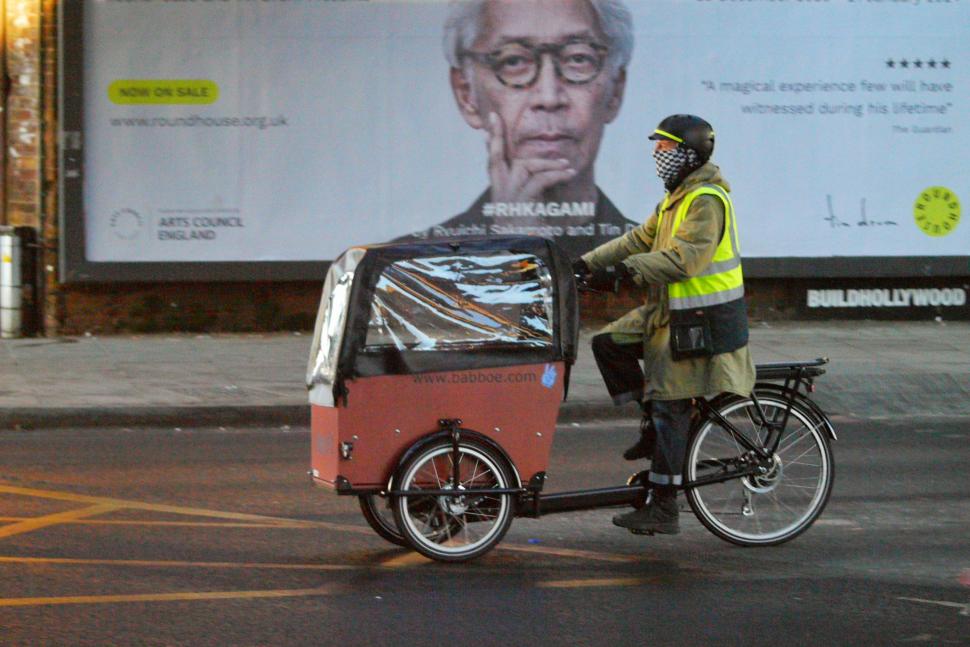
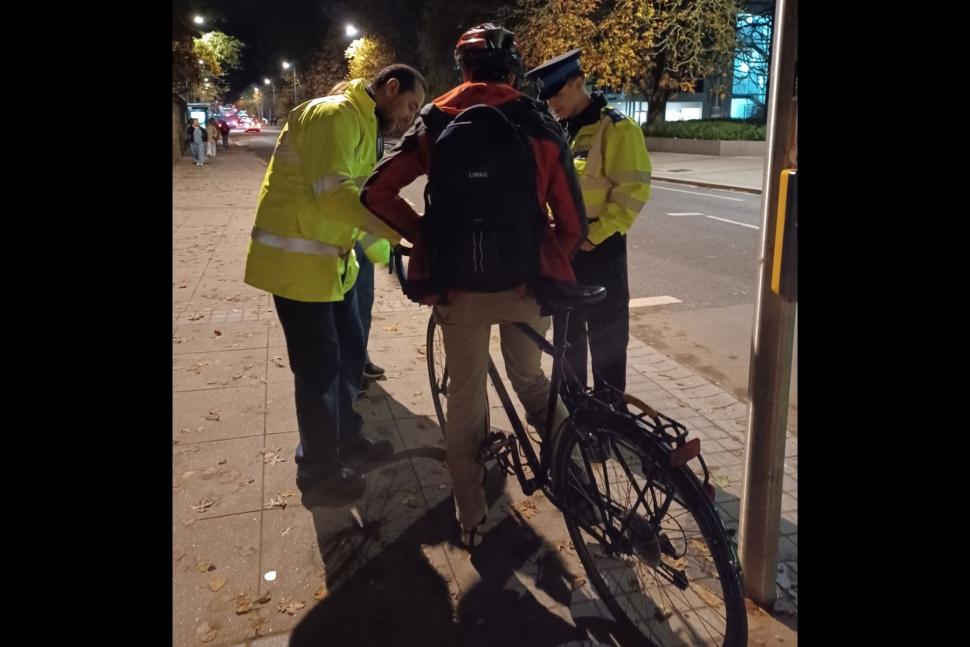
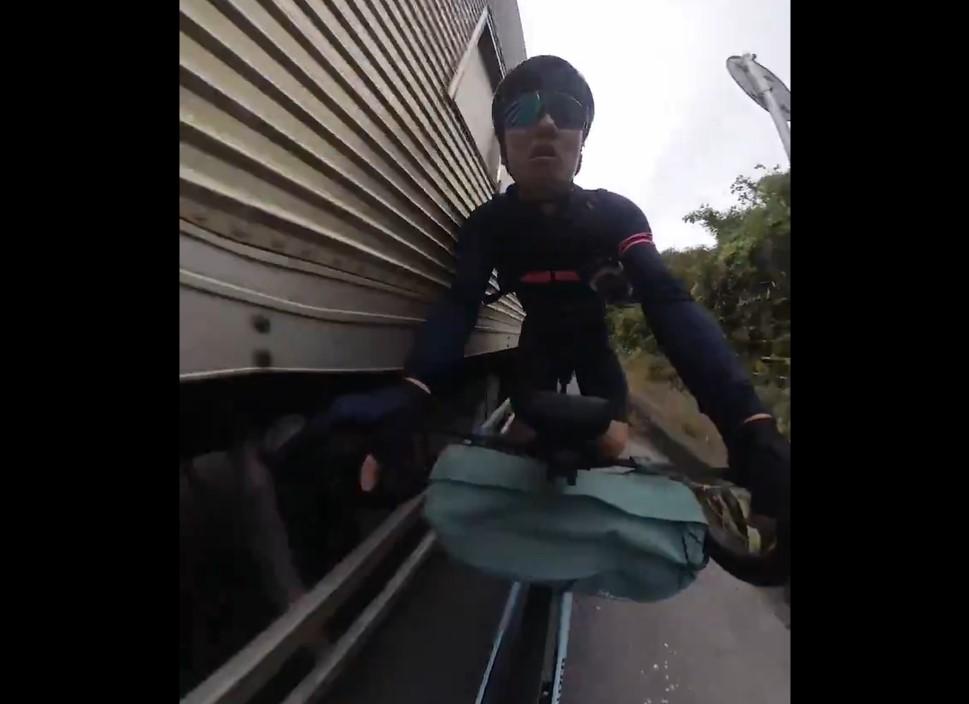
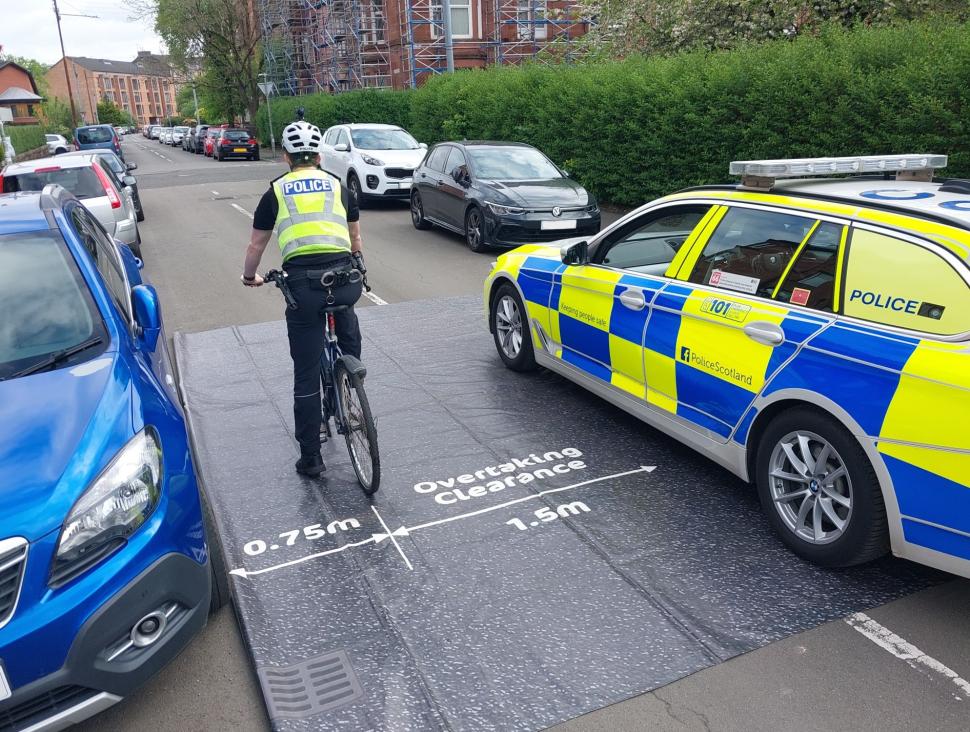
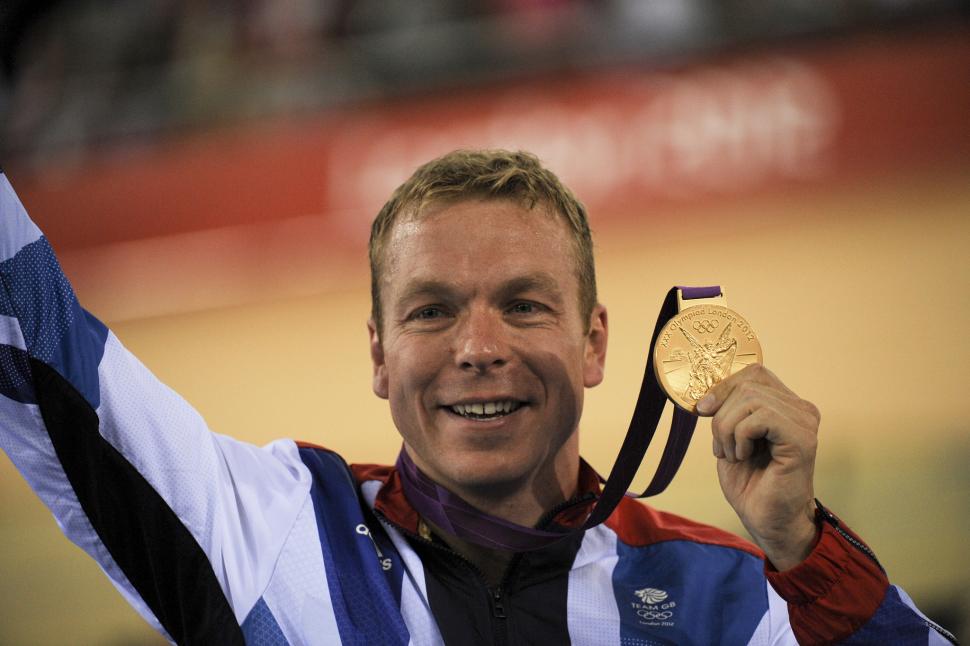
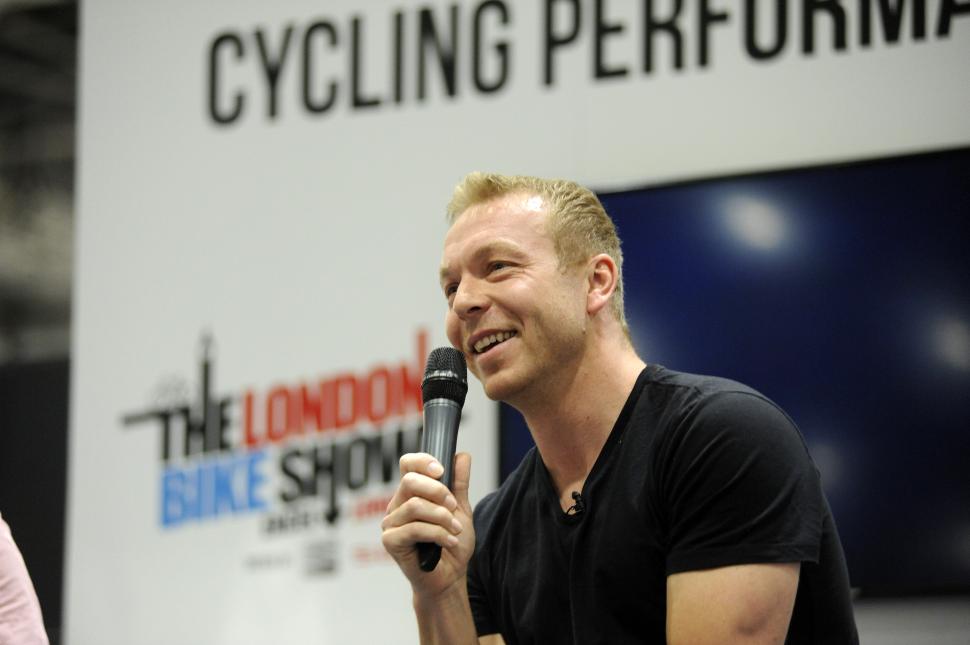


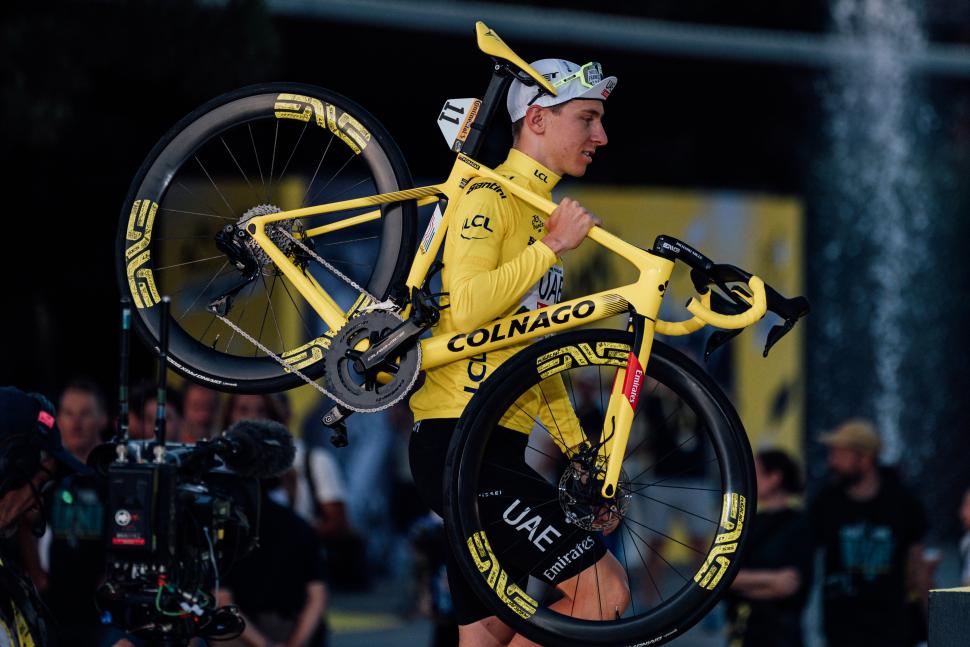

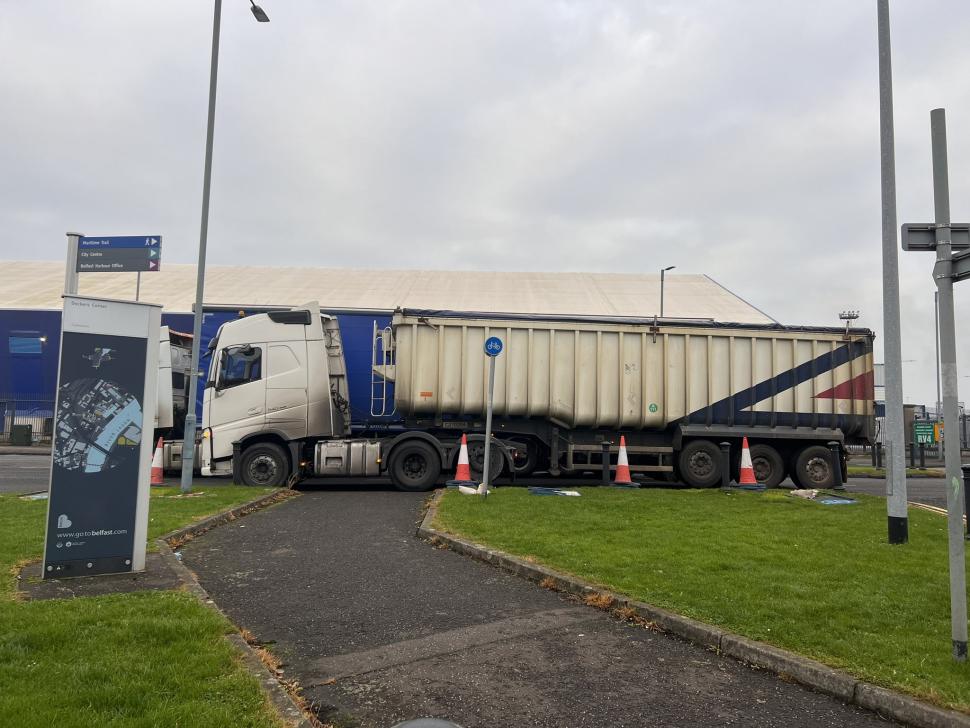
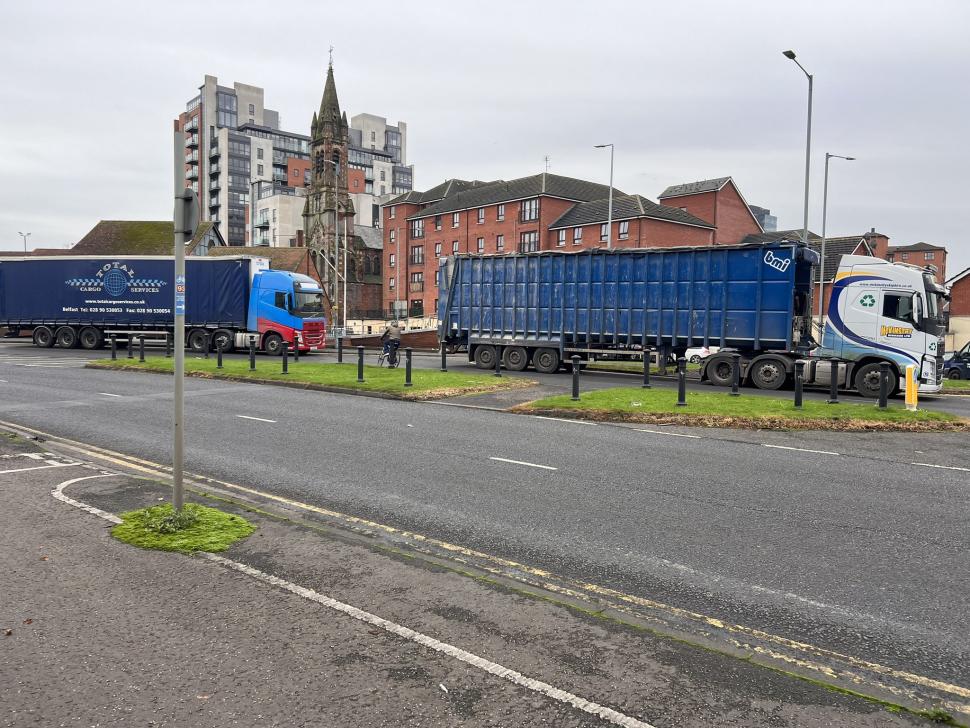
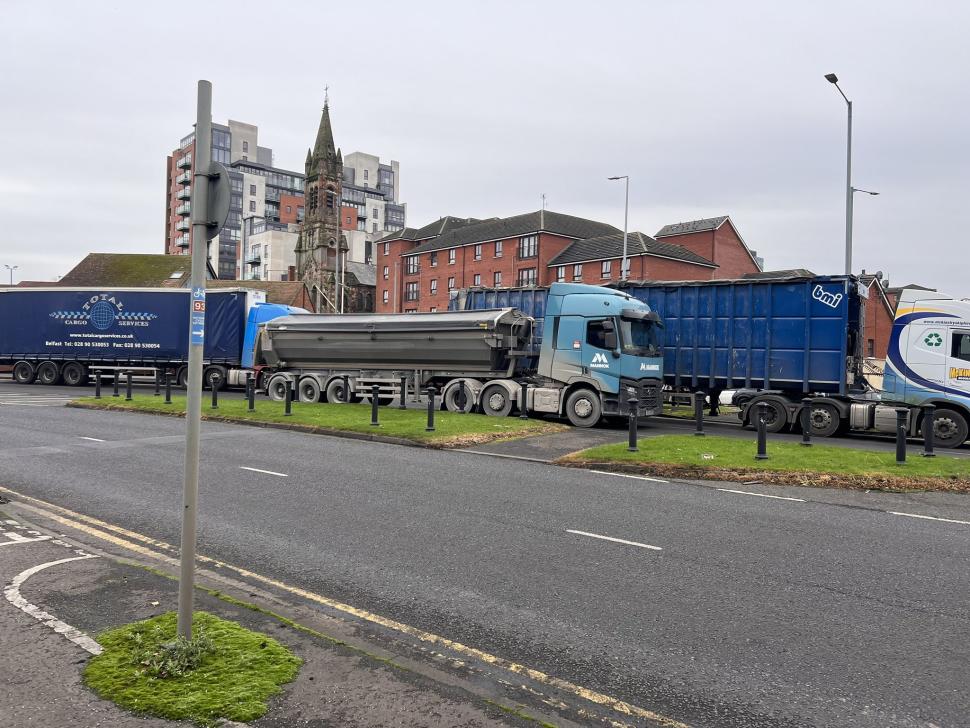


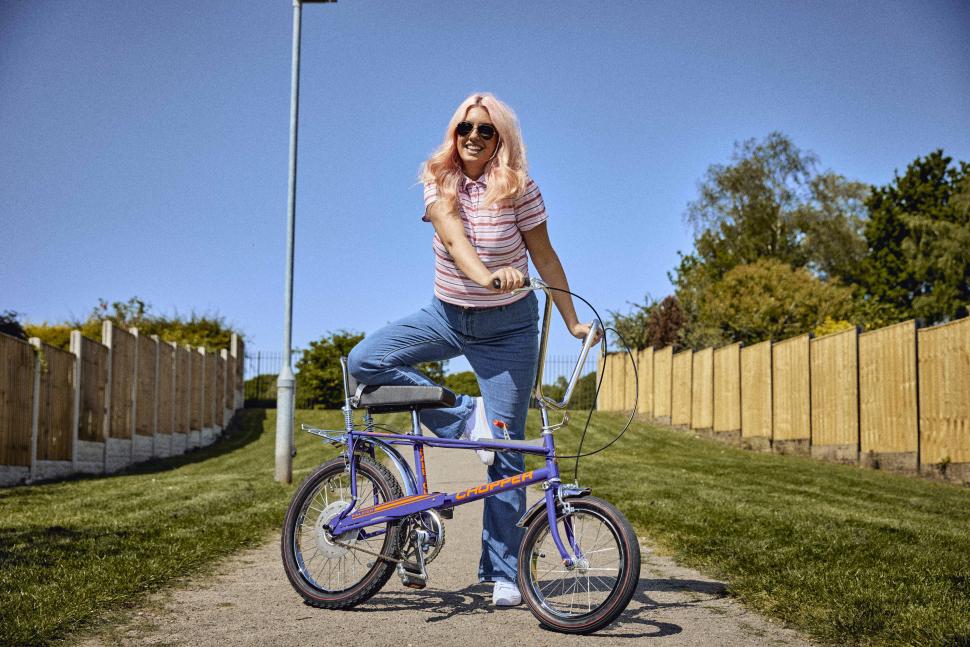

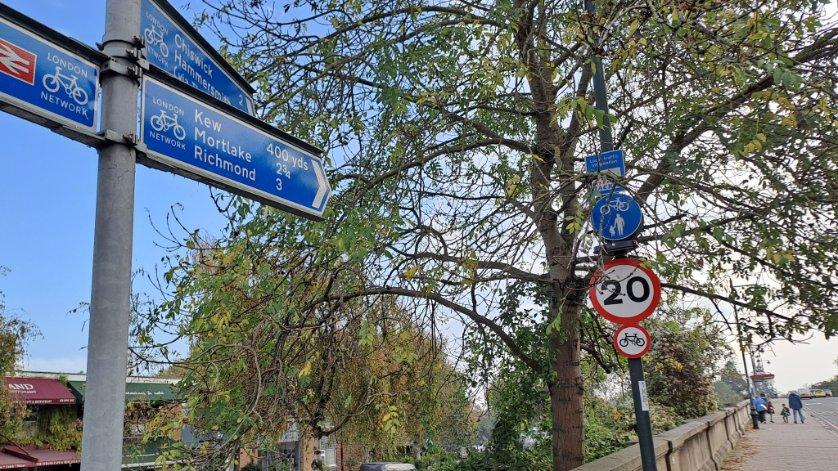
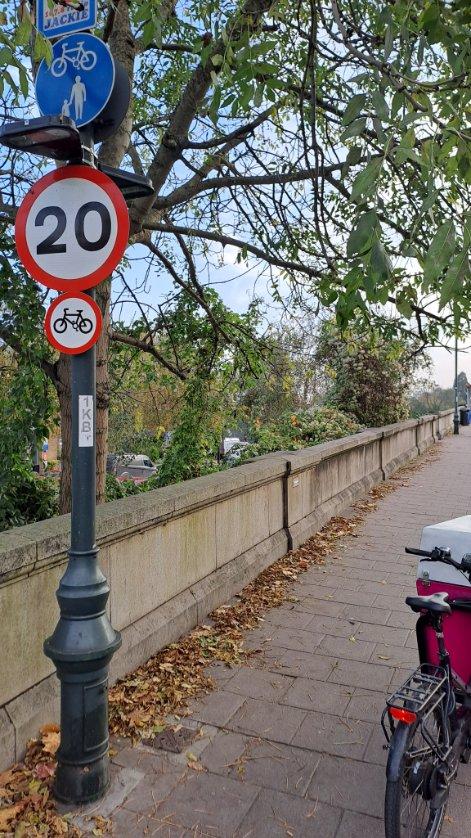
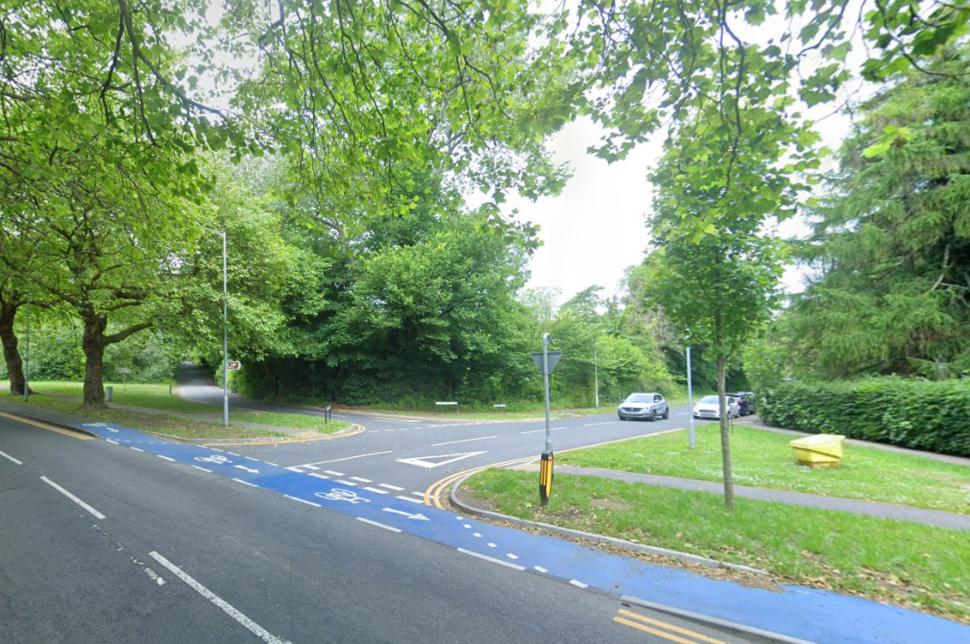
Add new comment
43 comments
If my experience at the weekend was anything to go by, not if it is a solid white line and especially not if the road is approaching a blind summit and has two solid white lines down the centre. Apparently it's only when the lines are short and dotted that you mustn't pass under any circumstances.
speaking of two solid lines behaviour... watched a porsche SUV overtake three cars on a blind bend on Sunday, narrowly avoiding a head on collision. Mental.
Hes mainly just talking absolute crap though. I have never been on a road where its not safe to pass cyclists. It might not always be safe but there is always somewhere to pass. Do you know what stops drivers from being able to pass? The sheer volume of traffic on our roads, almost always with a single person in the car.
If drivers want their journeys to be quicker then they should be screaming for better public transport. Bikes don't slow you down, other cars do.
What is the problem with a Close-Pass, seriously? The Law is clear. A close-pass is when the driver of a vehicle breaks the law! To address it, the police need to enforce the law! Nothing else will do. Just because some people claim to have nerves-of-steel, or are just dead inside, doesn't make it a non-issue. Crikey - that piture of the lorry is terrifying!
The video is even worse: https://road.cc/content/news/cycling-live-blog-29-october-2024-311009
The one I hate when people are trying to justify close passing with "Well if it's all right for a cyclist to pass within x distance of my car when coming towards me then it's ok for me to pass within x distance of them when passing". What they don't consider is with cars approaching in the opposite direction, both the car driver and the cyclist can see the other participant, both have a clear view of the road surface in front of them and are able to change speed or course to influence the point of passing and the passing distance so that they are happy with the result. When a car passes me from behind, I have little or no ability to influence either the position or distance and the car driver doesn't have a great vision of any road defects etc in front of me that I may need to avoid. That's a huge difference.
The biggest difference is if a driver misjudges a pass, I get hurt. But if I misjudge filtering, I get hurt.
Which can stand as the default answer for pretty much all of those 'cyclists should be treated the same as motorists' arguments, IMO.
Time for the annual visibility campaign post:
https://waronthemotorist.wordpress.com/2017/10/28/new-road-safety-campai...
If it saves one bollard...
That's one of those infinitely scrolling feeds, isn't it...?
I'll pay attention when people are talking about mandatory high-vis for dark coloured motor vehicles.
I use lots of lights and reflectors, and wear high viz of sorts but the high viz is mainly to keep the Mrs happy as if a driver doesn't spot the multiple lights then why on earth should anyone think they would spot the high viz?
Tbh I only wear bright and reflective clothing and use multiple lights is to diminish any arguments that I wasn't doing enough to be seen and safe! In reality it does nothing to protect me.
Pages